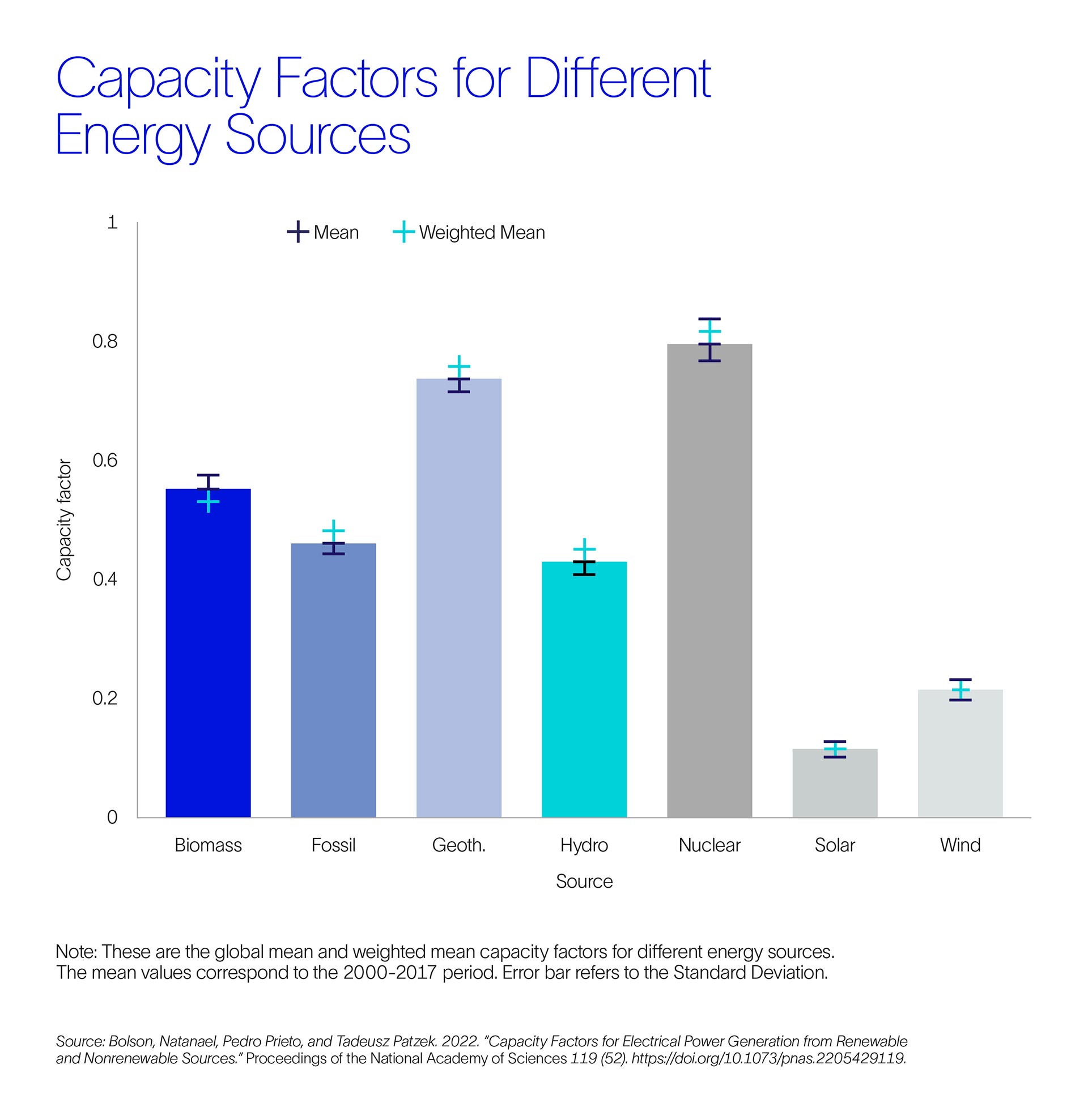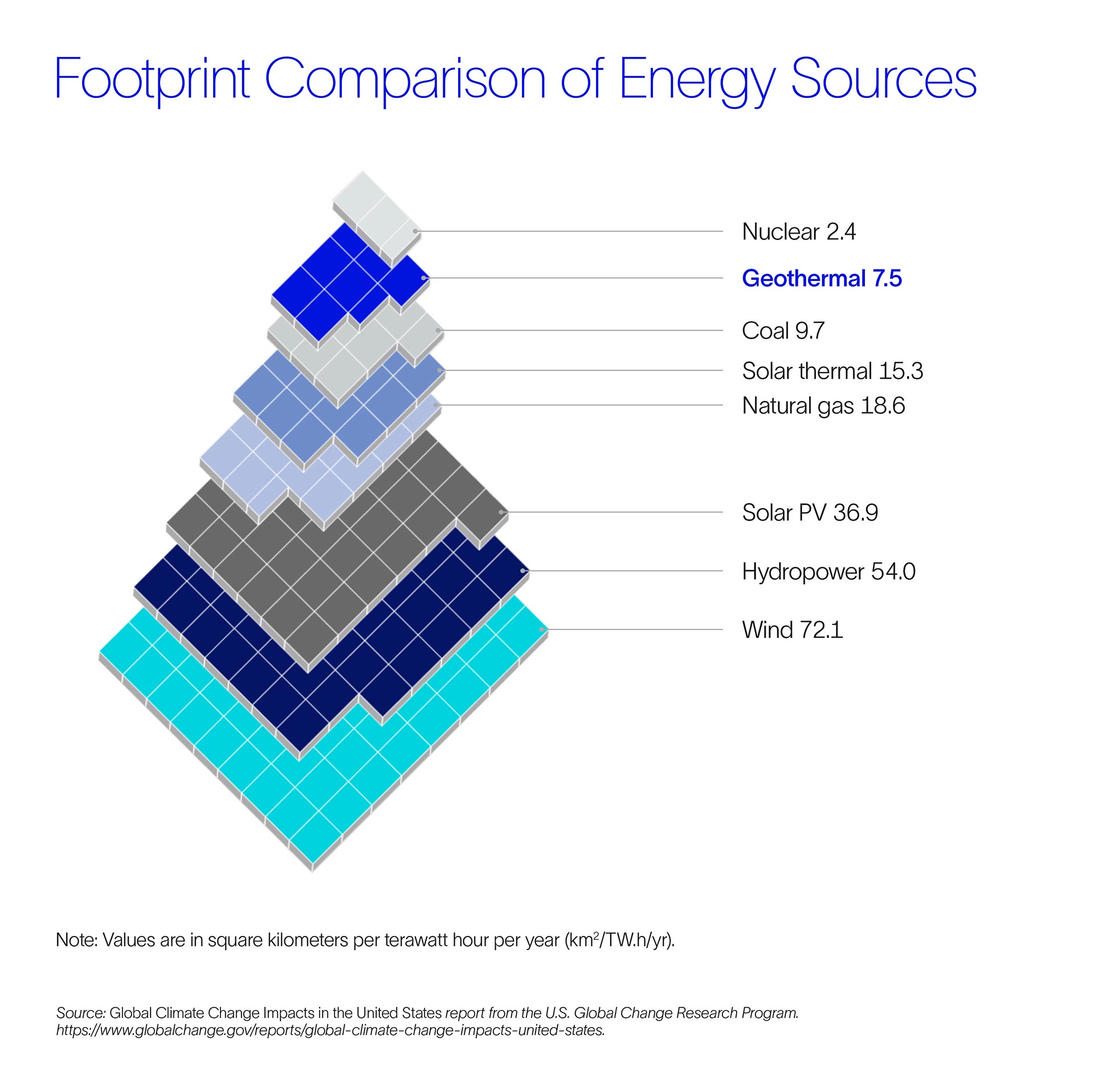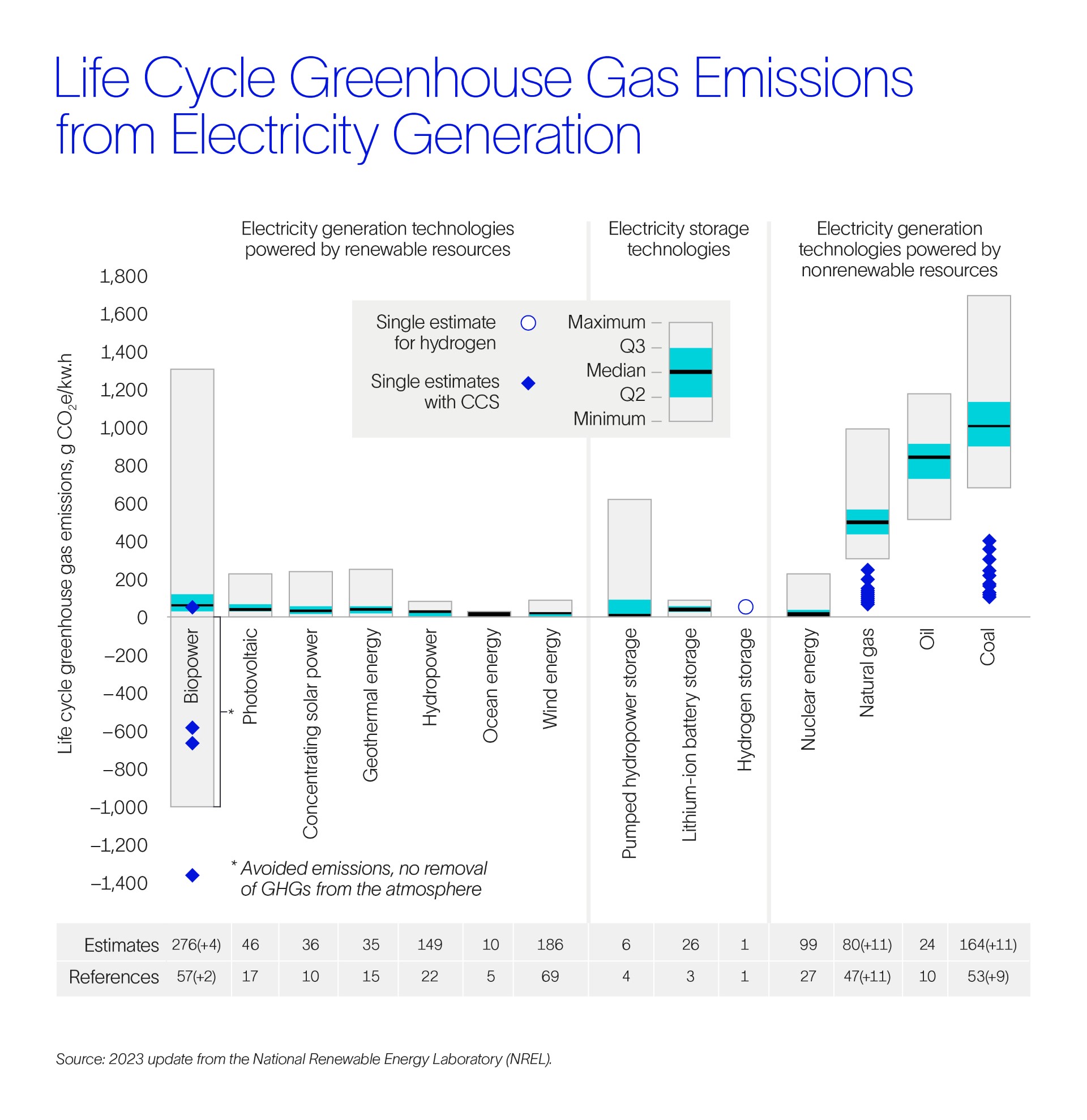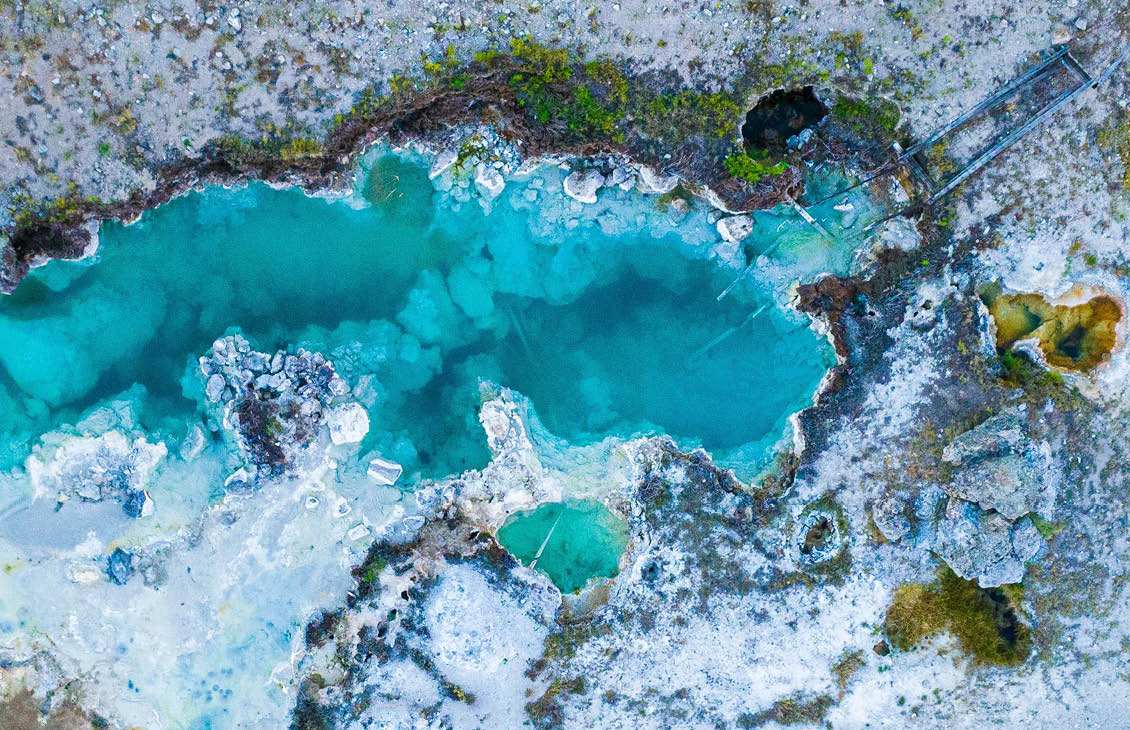Over the last two decades, solar photovoltaics (PV) and wind turbines have been the workhorses of the electric energy transition. Driven by rapid price declines and strong government incentives, the related technologies have reshaped the energy landscape by offering cheap, clean, and abundant electric power. But despite significant gains and benefits, these two forms of renewable energy are beginning to present considerable challenges to maintaining a stable electric grid, especially at higher penetrations. The challenges—including intermittency, extensive land use, and an inability to provide grid support—become more pronounced as penetration increases.
While energy storage can address certain intermittency issues, there are technical and economic hurdles that must be overcome. With the increasing penetration of solar and wind, and energy storage stretched to its technical limits to fill the gaps, we have to address a crucial question: Is the renewable energy puzzle missing a piece?
Geothermal energy has significant advantages over its wind and solar counterparts and nicely complements these intermittent sources in the journey to net zero. It taps directly into the Earth's core, providing a constant and reliable source of clean energy. Unlike weather-dependent solar and wind energy, geothermal sources offer 24/7/365 baseload power generation without exorbitant investments in energy storage. Geographical limitations have constrained this tech’s reach in the past, but advancements in adjacent industries, such as oil and gas drilling—along with the tech advancements in enhanced geothermal systems and advanced geothermal systems—are expanding the suitable geographic boundaries, thereby making geothermal energy accessible in regions not previously considered.
These factors, together with projected cost reductions driven by tech innovation, make geothermal energy an increasingly attractive option for firm renewable capacity in a sustainable future.
What has constrained the greater use of geothermal energy?
One of the biggest challenges for geothermal energy so far has been the capital cost. Compared to wind and solar, the initial infrastructure costs for geothermal are high, leading to a higher levelized cost of energy (LCOE). LCOE is the method used to calculate and compare the lifetime costs of generating electrical energy from various sources, such as wind, solar, fossil fuels, nuclear, and hydropower. It’s a useful formula for helping financiers and project developers understand the “average” unit cost of generating electricity across a power plant’s life and is typically measured in dollars per megawatt-hour (USD/MW.h).
From 2009 to 2023, the LCOE of solar PV fell by 83%, and onshore wind declined by 63% because of improvements in tech and manufacturing, increasing volumes, and other factors. As a result, the LCOE of these renewables are now economically competitive with fossil fuels, transforming the landscape of the electric power industry.
Today, the calculated LCOE for geothermal energy is competitive with that of natural gas and coal—USD 82/MW.h versus USD 70–$117/MW.h, respectively. But thanks to the efforts of independent geothermal developers and programs, such as the US Department of Energy’s Enhanced Geothermal Shot™ program, the industry can expect geothermal energy’s LCOE to decline in the coming years due to advancements in tech, drilling, and manufacturing, as well as changes to regulations and incentives.
Looking past—and overcoming—the limitations of LCOE
While simple, easy to understand, and widely used, the formula for calculating LCOE has several limitations and omissions that are becoming more relevant. The LCOE formula is entirely cost-based and ignores certain economic values (e.g., revenues associated with capacity and grid support) and the market benefits (e.g., dispatchability and high availability or capacity factors) provided by different energy sources. It also omits non-monetary factors such as carbon emissions, land use, and public perception. Consequently, LCOE calculations should not be used as the sole determinant for investments in the rapidly evolving electric power sector.
But let’s take a moment to discuss each of these factors, and the advantages offered by geothermal energy in each area.
Revenue potential
Like fossil fuels, geothermal energy provides baseload power. However, its cleanliness and availability allow geothermal power plants to drive higher power purchase agreement prices.
Take energy payments, for example. Electricity is more valuable when demand is high and alternative sources of generation are expensive. Geothermal energy can meet this demand and maximize return on investment. Intermittent renewable sources, such as solar PV and wind, generate in response to the weather rather than market signals. An electricity system operator trying to match generation and consumption cannot rely on the availability of such sources at times of high demand, a consideration that is not included in the LCOE formula.
Then, there are capacity payments. If you look at the graph below, you’ll see that geothermal plants can often achieve capacity factors (the ability of a plant to operate at its stated capacity) greater than 80%. This is substantially higher than the capacity factors for hydropower, solar energy, and wind, meaning that capital is deployed very efficiently.
Nonintermittent generators, such as geothermal plants, command higher capacity or resource adequacy payments than intermittent renewables. A power plant receiving a capacity payment is obligated to provide energy when requested by the buyer. The payment is specified in dollars per kilowatt-day (USD/kW.d) or dollars per kilowatt-month (USD/kW.month). For example, a 100-MW generator that successfully bid into the capacity market with a clearing price of USD 5/kW.month will receive an annual capacity payment of 100,000 kW × USD 5/kW.month × 12 months = USD 6 million.

The higher penetration of intermittent energy sources will drive greater value for resources that are able to provide clean, firm capacity in the future.
Reliability and grid stability
Reliable and consistent power generation is key to maintaining grid stability. Geothermal energy's unique characteristics make it an unignorable asset for addressing this critical need:
- High capacity factor and availability: As mentioned above, geothermal plants have one of the highest capacity factors among renewable energy resources, often exceeding 80%. This provides dependable baseload power generation, ensuring a stable foundation for the grid.
- Resource adequacy: With their consistent and predictable output, geothermal plants ensure that enough power is available to meet peak demand and maintain grid reliability.
- System inertia: Geothermal plants use large, rotating turbines that spin continuously and have considerable inertia. This inherent resistance to changes in frequency helps maintain grid stability during sudden shifts in demand or generation.
- Frequency regulation: Outages, load variations, wind and solar forecast errors, and other factors can cause frequency deviations on the grid. Geothermal power can satisfy the important need for frequency regulation.
- Black start capability: Geothermal plants can be equipped to start up independent of grid power, even during a widespread system blackout. This black start capability is critical for restoring power quickly and efficiently after a major outage.
- Extended service life: With proper management, geothermal plants can be sustained for 30–50 years or more, which compares favourably with various estimates for solar PV (30–35 years), wind turbines (30 years), coal plants (10–40 years), and other fossil fuel-based plants (20–40 years). This longevity ensures a reliable and lasting source of baseload power for the grid.

Land use intensity
Although inexpensive, intermittent renewables take up a considerable amount of space. In fact, solar and wind plants are among the top three energy sources in terms of intensity of land use (see chart further below). Consequently, while people are generally supportive of these renewables, the reaction is somewhat different when deployment is planned locally.
A 2023 study by Columbia Law School’s Sabin Center for Climate Change Law found that in the US, “228 local laws, ordinances, and policies had been enacted in 35 states to restrict renewable energy projects…local opposition to projects also led to cancellations, delays, or reductions in the size of projects.” In Germany, a McKinsey study found that out of "51% of the country’s land potentially suitable for wind farms, only 9% remains after factoring in regulatory, environmental, and technical constraints.” In France, the same study revealed that “wind turbines are restricted from about half of France’s total land area. This is because of flight paths, historic or protected sites, and radar exclusion zones—areas where wind turbines may interfere with military, civil, and commercial aviation radar systems.”
With 10% the land requirement of wind farms, 20% that of solar farms, and the second-lowest land use intensity among baseload energy sources , a geothermal plant provides a quiet, more discreet, and environmentally and community friendly option for project developers and financiers.

Low carbon emissions
Since the Paris Agreement was signed in 2015, discussions have been ongoing as to how humanity is going to address the challenges of climate change and how quickly it can do so. There has been significant progress on this front, with double-digit growth in solar and wind power in some regions . However, as mentioned earlier, solar and wind energy alone are not the solution. According to some estimates, geothermal power plants emit 97% less acid rain-causing sulfur compounds and about 99% less carbon dioxide than fossil fuel power plants of a similar size. Therefore, geothermal energy provides a substantially cleaner source of baseload power than fossil fuels.

Energy security
Energy security has always been a concern when a country considers its energy infrastructure strategy, but its prioritization ebbs and flows depending on macrofactors such as energy price. However, the topic has come to the forefront of energy policy debates following the Russian invasion of Ukraine. Witnessing the rapid and significant impact one country can have on others has helped countries that have grown dependent on foreign energy sources realize that their access to, and price of, supplies are at risk, and the loss of these resources can significantly impact their economic and social well-being. As a result, countries are looking for alternatives and assessing opportunities for domestic energy resources.
With energy security now at the forefront of infrastructure development discussions, geothermal energy has emerged as a key resource that is both domestically sourced and a provider of baseload power, not to mention applications for heating and cooling, as well.
Moreover, it can complement solar and wind energy. By addressing concerns about intermittent renewable energy, it enables a more diverse and robust energy mix. Finally, geothermal tech doesn’t require critical minerals, thereby eliminating the growing concern about any related supply chain risks.
So, what does this all mean?
When considering the financing or development of a power plant, it’s important to account for many factors. Remember that LCOE is but one part of the picture. Other considerations should include:
- Revenue potential (i.e., energy and capacity payments)
- Grid support and stability
- Land use intensity
- CO2 emissions
- Energy security.
When these other criteria are factored in, geothermal energy is the clear winner.
The grid stability challenges associated with intermittent renewable energy sources are known, with problems already existing in certain markets. These will only increase with the rapid deployment of wind and solar projects. The financing and development entities deploying utility-scale projects may benefit from a revised or updated evaluation method that accounts for both the intrinsic (economic, monetary) and extrinsic (social, non-monetary) values of these projects.
Selecting a renewable tech such as geothermal, with a more traditional capacity factor (similar to that of coal and natural gas plants), will serve the needs of the electric grid and derisk electricity supply. This all while simultaneously reducing overall emissions associated with electricity generation. A truly “future-proof” tech choice for a sustainable outlook!




